The newborn calf receives her feeding of 4 quarts of high quality, clean and fresh colostrum within three hours after birth. This should provide both the immunity and energy needed for a successful launch in life. But are we providing enough energy after the colostrum feedings to support healthy calves through growth and continued development of her immune system?
Feeding for Calf Maintenance
Each calf must first meet her maintenance requirement which includes the energy necessary to breathe, eat, maintain their core body temperature at 101℉, and replace cells as needed. Additionally, calf raisers have a goal to double her body weight before weaning, as the correlation of higher preweaning average daily gains and future milk production is high.
Temperature’s Effect on Calf Feeding
Yet as we prepare to feed to meet all these needs, we must also be mindful of the environmental temperature, as a drop below 60℉ (15.5℃) increases the energy required to meet those basic maintenance requirements.
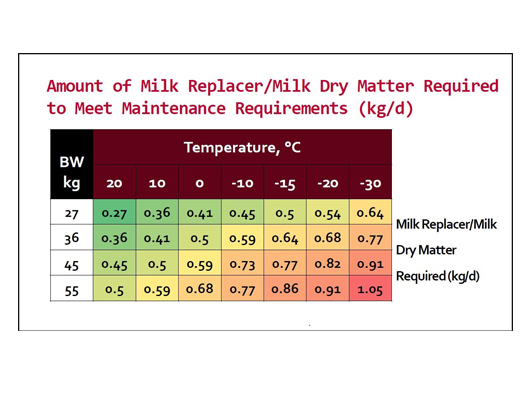
Do you see how the requirement numbers get higher as the temperatures drop in cold weather? Four-quart feedings, delivered at least twice daily, may be the calf’s best friend as they grow, allowing the calf to meet requirements for both maintenance and growth. If we think about this pictorially, do the two calves below have the same maintenance needs?
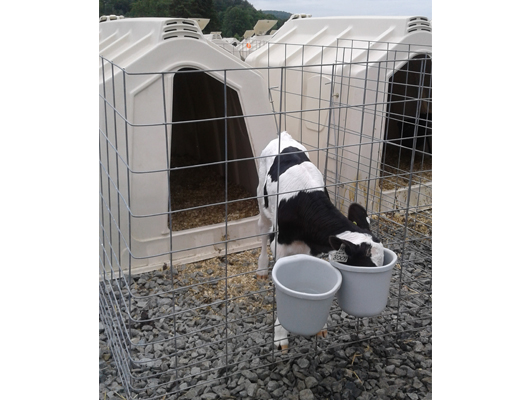
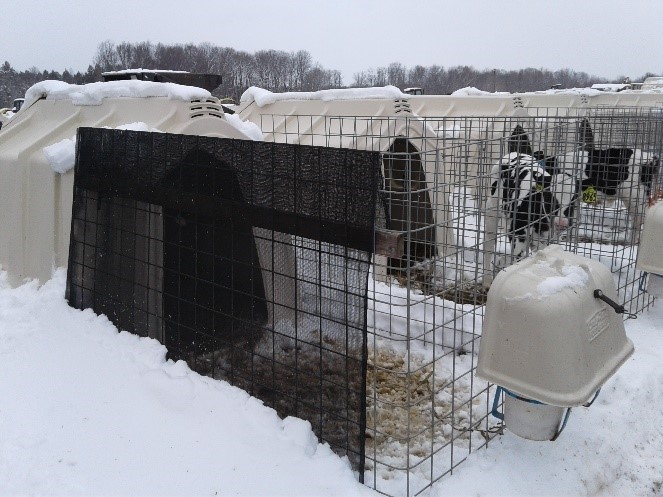
Increasing Calf Feedings
One key consideration when increasing milk (or calf milk replacer) feeding volumes is the ability to feed different volumes of milk to different bottle-feeding calves. Many calf caregivers use a step-up approach to the 4-quart feedings, following with a step-down in quantity fed as calves approach weaning. One such example comes from Mikayla Bullman, calf feeder at Fisher-Clark Dairy Farm in Wisconsin, as seen on the Vita Plus website. The farm’s program follows the feeding chart below:
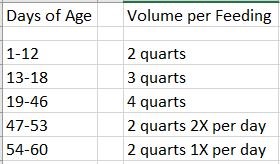
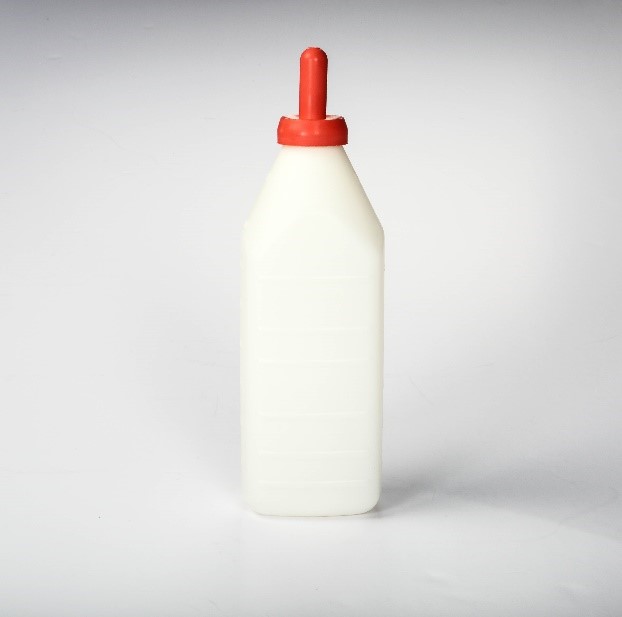
I know some dairies that are offering the 4-quart feedings by day 10 and others that deliver the milk in 3 daily feedings, rather than two. There is no perfect system to deliver the feed and it is best to discuss with your calf care team and nutritionist to determine what best suits your farm’s situation, but there are some key points to keep in mind to avoid the concern of a hungry calf:
Consistent Volumes of Milk
Be sure to feed consistent volumes of milk at each feeding. Often calf raisers will mark individual or groups of calves to indicate the specific amount to be fed. Sometimes this is accomplished with colored bands fastened to hutch fences or bottle feeders.
Milk Replacer Concentrations
When feeding milk replacer, be sure that everyone is mixing it at the same concentration. Sometimes when we encounter a scours problem on a farm, we find that each feeder is mixing the powder differently. This problem can be solved relatively easily by using scales to measure the milk replacer powder for each feeding.
Bottle-Feeding Temperatures
Along with consistent volumes and concentrations, we need to deliver milk at the same temperature at every feeding. The goal here is to deliver milk in the range of 100-105oF (38-41oC). If the weather is cold, this may mean making more trips to be able to deliver the milk at the desired temperatures or mixing milk replacer with warm water.
As calf raisers, we often hear discussions about whether to feed pasteurized milk or milk replacer, feed twice or three times daily, how many days of age to wean calves, the best cleaning and sanitation products to use, and more. But, ultimately, none of it matters if we aren’t delivering adequate amounts of good quality milk to allow calves to thrive and grow.
Calf-tel offers the tools and support you need to grow healthy bottle-fed calves. Check out their calf bottle accessories to support your calf feeding journey.
About the Author
Kelly Driver has been involved in the New York dairy industry all her life. In addition to raising dairy calves and replacement heifers, she is the Northeast Territory Manager for Calf-Tel. Feel free to contact her at kellydriver@hampelcorp.com with your calf questions or suggest a topic you would like covered in a future blog.
References
- Dairy Calf and Heifer Association. (2019). Gold Standards. Retrieved from https://www.newpittsburgvetclinic.com/sites/default/files/DCHA_Gold_Standards_iii_WEB_.pdf
- Steele, Michael. 2020, February 10. Nutritional regulation of gut function in calves: colostrum and milk. Presented as Hoard’s Dairyman online webinar.
- Leadley, S. (2010, January). Feed more milk without scours. Calving Ease. Retrieved from http://atticacows.com/library/newsletters/CEJanuar…
- Starting Strong-Calf Care blog. Starting strong: a day in the life of a calf raiser – calf feeding procedures. (2019, July 17). VitaPlus. Retrieved from https://www.vitaplus.com/blog/articles/video-day-l…
Courtesy of our dealer – CRI REPRODUCCIÓN ANIMAL MÉXICO SA DE CV.
Courtesy of our dealer – Global Farming Technology Co., Ltd.
